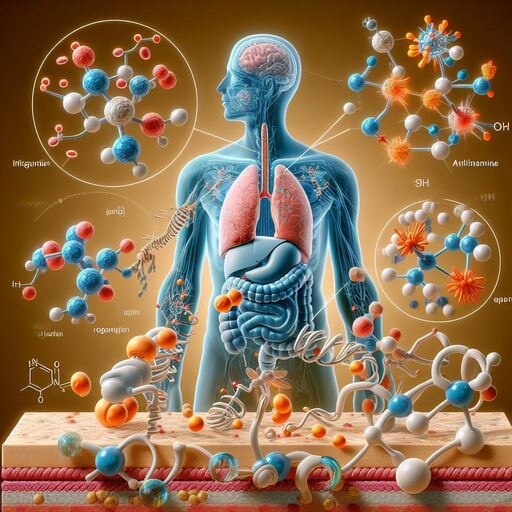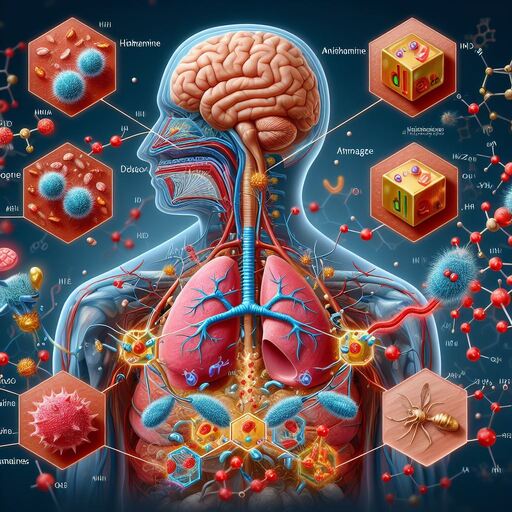How Antihistamines Transform Allergy Symptoms
How Antihistamines Transform Allergy Symptoms
Allergies are often dismissed as minor inconveniences, but for those who suffer from them, they can be significant obstacles to living a full and vibrant life. Whether it’s seasonal allergies triggered by pollen, perennial allergies caused by dust mites or pet dander, or even food allergies that can be life-threatening, the impact on daily life can be profound. Sneezing, itching, congestion, and watery eyes can make simple tasks feel monumental, turning the joy of living into a constant struggle against discomfort.
However, amidst the frustration and discomfort, there exists a powerful ally in the fight against allergies: antihistamines. These medications have revolutionized the way we manage allergic reactions, offering relief from symptoms that once seemed insurmountable. In this article, we’ll explore the transformative power of antihistamines and how they have become indispensable tools in the arsenal of allergy sufferers everywhere.
Understanding Allergies: The Body’s Misguided Defense
To understand how antihistamines work, it’s essential to first understand the underlying mechanisms of allergies. Allergies occur when the immune system mistakenly identifies harmless substances, such as pollen or pet dander, as threats to the body. In response, the immune system produces an antibody called immunoglobulin E (IgE), which triggers the release of histamine and other chemicals.
Histamine is the primary culprit behind the symptoms of allergies. It causes blood vessels to dilate, leading to inflammation and swelling, as well as increasing mucus production and triggering the characteristic itching and sneezing associated with allergic reactions.
Enter Antihistamines: Blocking the Body’s Alarm System
Antihistamines work by blocking the action of histamine, thereby preventing or reducing the symptoms of allergies. By binding to histamine receptors on cells throughout the body, antihistamines interrupt the cascade of inflammatory responses triggered by histamine release.
There are two main types of antihistamines: first-generation and second-generation. First-generation antihistamines, such as diphenhydramine and chlorpheniramine, are known for their sedating effects and are often used to treat symptoms such as itching and sleep disturbances. Second-generation antihistamines, including loratadine, cetirizine, and fexofenadine, are less likely to cause drowsiness and are preferred for daytime use.
How Antihistamines Transform Allergy Symptoms
The Transformative Power of Antihistamines
For allergy sufferers, antihistamines represent more than just relief from symptoms – they offer a newfound sense of freedom and control over their lives. No longer constrained by the fear of seasonal changes or exposure to allergens, individuals can go about their daily activities with confidence, knowing that relief is just a pill or a nasal spray away.
The transformative power of antihistamines extends beyond physical comfort; it also has profound psychological effects. By alleviating the constant discomfort and distraction caused by allergy symptoms, antihistamines enable individuals to focus on their work, studies, and relationships without being hindered by their allergies.
How Antihistamines Transform Allergy Symptoms
Choosing the Right Antihistamine: Personalized Relief
One of the remarkable aspects of antihistamines is the variety of options available to suit individual preferences and needs. Whether you prefer the convenience of a once-daily tablet or the targeted relief of a nasal spray, there’s an antihistamine formulation that’s right for you.
When selecting an antihistamine, it’s essential to consider factors such as the severity of your symptoms, any existing medical conditions, and potential side effects. Consulting with a healthcare provider can help you make an informed decision and ensure that you’re getting the most effective treatment for your allergies.
How Antihistamines Transform Allergy Symptoms
Beyond Symptom Relief: The Potential of Antihistamines
While antihistamines are primarily known for their role in relieving allergy symptoms, emerging research suggests that they may have additional benefits beyond their antiallergic effects. Studies have shown that antihistamines may have anti-inflammatory properties, which could make them valuable in the treatment of conditions such as eczema, asthma, and even certain autoimmune disorders.
Furthermore, recent advances in antihistamine research have led to the development of novel formulations and delivery methods, including intranasal antihistamine sprays and combination medications that target multiple pathways involved in allergic reactions. These innovations hold the promise of even greater efficacy and convenience for allergy sufferers in the future.
How Antihistamines Transform Allergy Symptoms
Conclusion: Embracing Relief with Antihistamines
In conclusion, antihistamines have transformed the landscape of allergy management, offering relief and hope to millions of individuals worldwide. By blocking the action of histamine, these medications provide much-needed relief from the symptoms of allergies, allowing individuals to reclaim control over their lives and pursue their passions without being held back by their allergies.
Whether you suffer from seasonal allergies, perennial allergies, or food allergies, there’s an antihistamine that can help you unleash relief and embrace a life free from the constraints of allergies. Consult with your healthcare provider to explore your options and discover the transformative power of antihistamines today.
How Antihistamines Transform Allergy Symptoms

